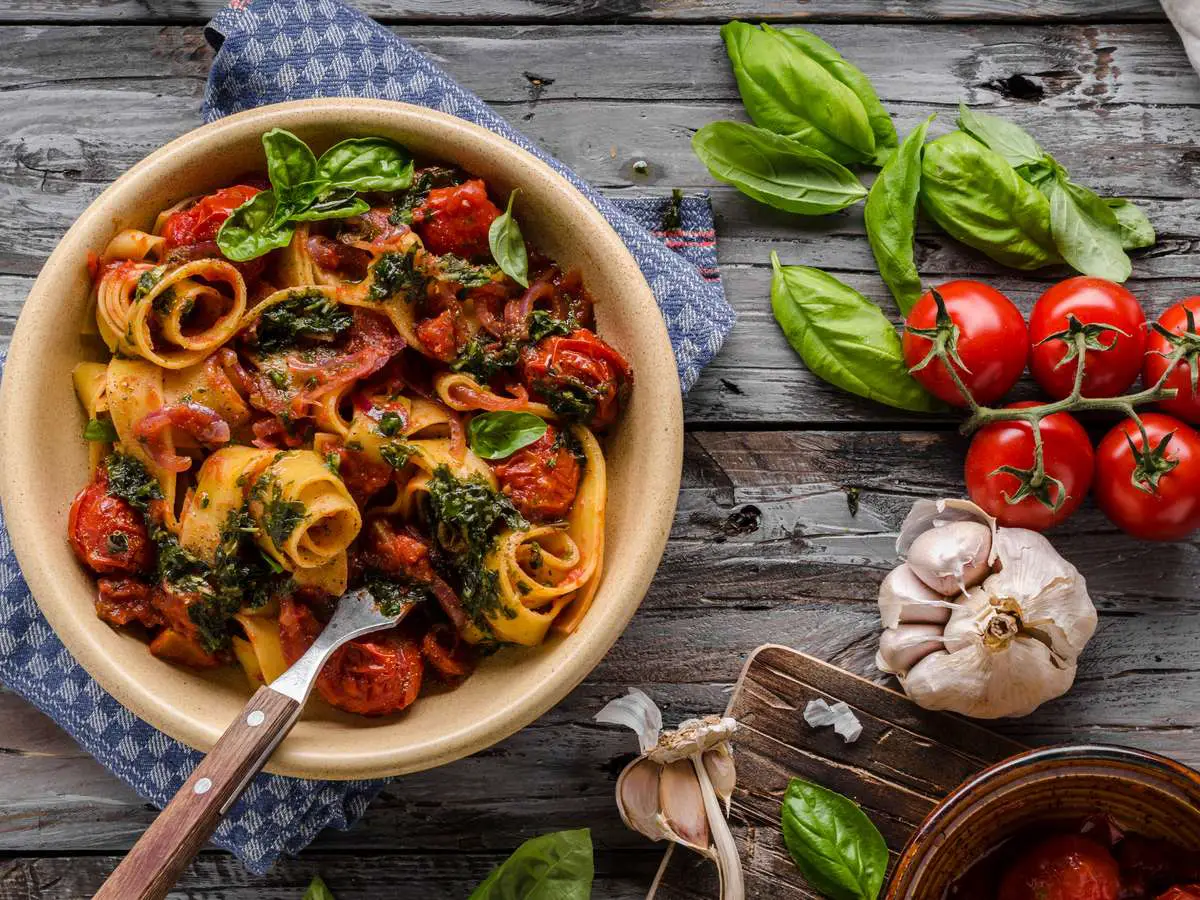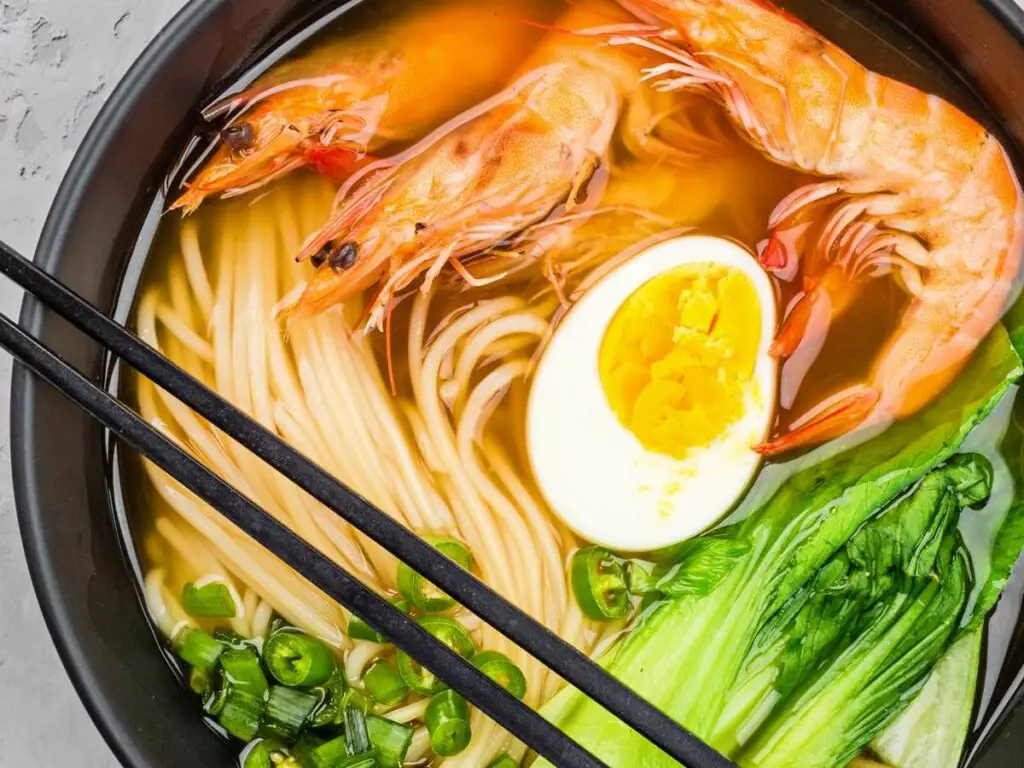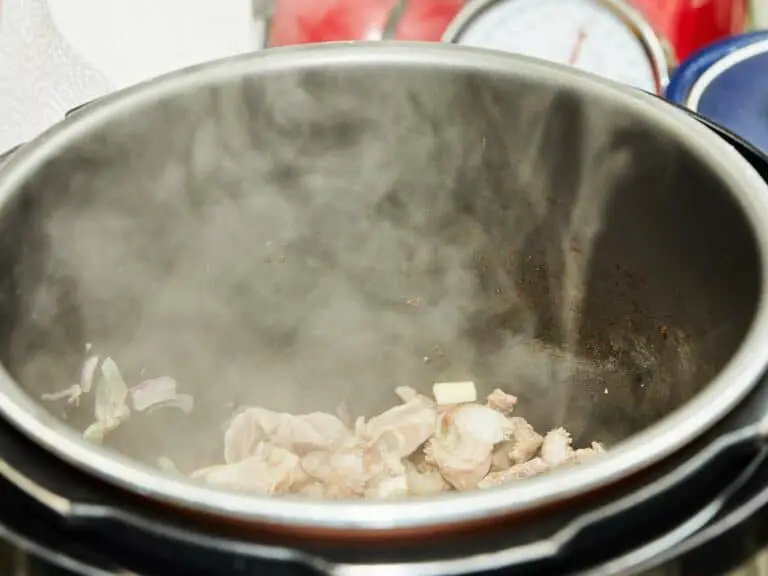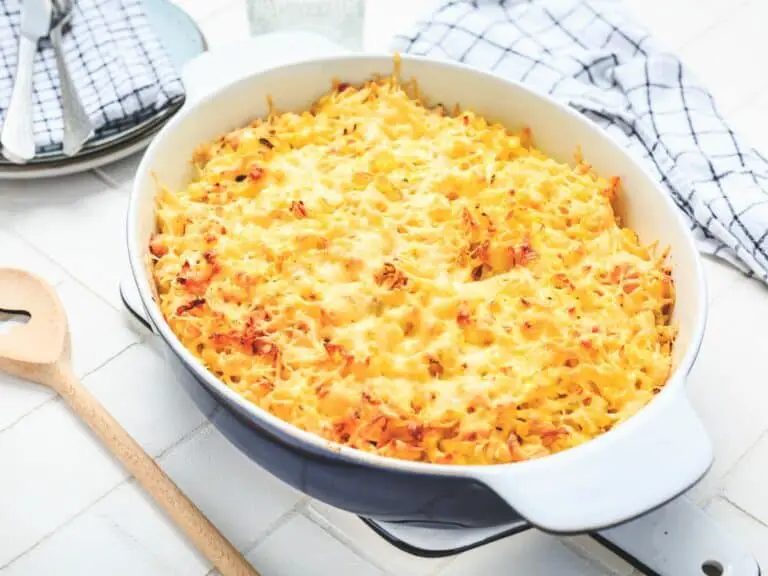Difference Between Pasta And Noodles? [Is There Any?]

Have you ever wondered if pasta and noodles are the same things? How much do they differ from each other? Can they be used interchangeably?
Pasta and Noodles are not the same. Although they are both made from wheat flour. However, the difference is in the wheat that is used to make noodles and pasta. Pasta is made from durum wheat flour which is coarser in texture than the common wheat flour that is used to make noodles.
Let us look at some of the differences between Pasta and Noodles.
| Sr.No. | Parameters | Pasta | Noodles |
| 1 | Ingredients | Pasta is made with special wheat called durum wheat, salt, and water. | They are made with common wheat flour, salt, and water. |
| 2 | Flours made with | Other Flour such as lentils, chickpeas, rice, etc. are being used to make pasta. | Noodles are generally made with wheat flour or rice flour. Other flours used are Buckwheat, moong bean, sweet potato flour, tapioca flour, and seaweed. |
| 3 | Rice Flour | Traditionally pasta is not made with rice flour. However, there are many varieties of rice pasta commercially available today. | Traditionally rice noodles are a common staple in Asian cultures, they are even enhanced with cornstarch and tapioca to improve their texture. |
| 4 | Freshness | Fresco pasta or Fresh pasta is made with eggs, durum wheat flour, semolina salt, and water. It is widely available in supermarkets and can be made at home as well. | Fresh noodles are not widely available, mostly near Asian supermarkets. Also, they use normal wheat flour as well as do not use semolina. The most commonly available variety is dried noodles. |
| 5 | Quantity of eggs | Pasta may or may not contain eggs. Also, the number of eggs used in pasta is lesser compared to noodles. | Egg noodles contain a higher ratio of eggs to flour compared to pasta with eggs, as the eggs play a dominant role in providing flavor and texture to the noodles. |
| 6 | Shapes | Pasta is made in a wide variety of shapes from shells, ribbons, grains, pipes, etc. Each shape of pasta has a distinct name according to its shape and size. | Noodles, unlike pasta, retain their basic shape i.e. long and thin. Some noodles have a threadlike resemblance and are super thin. |
| 7 | Size | There are a variety of sizes of pasta. Even a particular shape of pasta has different shapes. Such as macaroni pasta consists of penne, elbow macaroni, cavatappi, ziti, cannellini, etc. | Noodles come in a variety of sizes from long ones to short ones. Super thin noodles or flat noodles. |
| 8 | Methods of making | Pasta can be handmade, rolled with a pasta maker, or using commercial machines. | Noodles can be hand-cut, spun, flung, rolled, or shaved from a block directly into boiling water. |
| 9 | Variety available | Pasta is either sold fresh or dried it is never fried. | Noodles are sold fresh, dried, steamed, parboiled, and fried. |
| 10 | Served in | Pasta is almost always served in cheese or tomato-based or any other sauce. Also, the pasta should be able to hold the sauce. | Noodles are not served in any sauces, however, they are widely added to soups. Noodles are merely dipped in the soup and eaten warm. |
| 11 | Type of salt used | Table salt, sea salt, and coarse salt can be added to pasta. However, they do not greatly affect the outcome of the pasta. | A variety of alkaline salts and other salts are added to the noodles and they greatly affect the outcome of the noodles. |
Are Noodles and Pasta the same?
Noodles and pasta are not the same things, even though they might look similar they have different uses in the culinary world. They primarily differ from each other in the type of flour that is used. Pasta uses durum wheat flour and semolina which are coarser in texture compared to the common wheat flour or refined flour that is used in noodles.
Pasta and noodles also differ from each other in the type of cooking process that they undergo as well as the sauces and the ingredients that are used. Pasta uses various dairy, cheese, and tomatoes individually or by combining them to make different variations of sauces. Whereas noodles are not coated with sauces they are primarily added to rich, flavorful broths that have taken time to mature.
Noodles may also be tossed in sauces such as soy sauce, chili vinegar, oyster sauce, etc. compared to pasta sauces these sauces are strongly flavored and pungent. Thus, the proportion of sauce to noodles required is very less.
Related Reading: Is Risotto Rice or Pasta?
Why are noodles called pasta?

Although noodles and pasta significantly differ from each other. Noodles being referred to as pasta has more to do with the origins of the terminology than the product itself. The word pasta is the Italian word for dough. The origin of the word Noodle in English was borrowed from the German word ‘nudel’ in the 18th Century.
In mandarin or traditional Chinese noodles that are made from wheat are referred to as ‘mien’ or ‘mein’. While the word ‘fen’ is used to describe noodles made from other starches such as rice flour, moong bean, tapioca flour, and sweet potato flour.
Are all noodles considered pasta?
Absolutely all noodles are considered pasta, whereas all pasta is not considered pasta. Spaghetti and fettuccini can both be considered noodles and pasta. Couscous and Gnocchi can only be pasta and not noodles. Noodles like instant ramen noodles can be only called noodles and not pasta.
The terminology of pasta means ‘paste’ or ‘dough’ in Italian. ‘Nudel’ as pasta is referred to in German is a borrowed term in English in reference to pasta that is in the shape of noodles. Hence all noodles are considered pasta.
There is a variety of noodles widely popular in Asian cuisines such as buckwheat noodles, sweet potato noodles, rice noodles, tapioca noodles, and noodles made from various other flours. These noodles are also technically pasta. As they are all made into a paste by combining respective flours and water.
Are pasta and egg noodles the same?
Pasta and Egg noodles are not the same things. As, Pasta is made from durum wheat flour, eggs, salt, and water whereas noodles are made by combining common wheat flour, salt, eggs, and water. Sometimes, semolina is also used to make pasta. Durum wheat flour is coarser than the wheat flour that we commonly use.
Also, the number of eggs used in pasta is less in comparison to the number of egg noodles. Egg noodles heavily depend on eggs being a key component to provide flavor and texture to the noodles.
Related Reading: “Does Pasta Contain Egg? [A Complete Guide!]”
Which is better pasta or noodles?
Pasta and Noodles both have similar nutritional values and are good sources of carbohydrates. However, they do not provide much in terms of nutrition. It is better to have pasta or noodles which are enriched with other flours compared to the traditional wheat flour as they will offer much more nutritional value.
Also, it is highly recommended to include more meats and vegetables in pasta and noodle dishes to increase the nutrient value of the dish.
The table given below is a comparison of nutrition provided by pasta with eggs in it and egg noodles. The serving size is 1 cup (160 grams).
| Egg Noodles | Pasta with Eggs | |
| Calories | 221 | 210 |
| Fat | 3.3 g | 1.5 g |
| Cholesterol | 46 mg | 30.24 mg |
| Carbohydrates | 40 mg | 39 mg |
| Fiber | 1.9 g | 3.02 g |
| Protein | 7 g | 8 g |
More Related Articles:
Below are the links to a few more related articles that might interest you!
![Why do Macroni and Cheese separate? [here’s What to Know!]](https://myhousehacks.com/wp-content/uploads/2022/09/ezgif.com-gif-maker-7-768x576.jpg)
![Can You Use Regular Milk to Fry Chicken?[ Is It Okay?]](https://myhousehacks.com/wp-content/uploads/2023/02/ezgif.com-gif-maker-2023-02-16T162606.222-768x576.jpg)
![Ham Vs Hamburger [Major Differences!]](https://myhousehacks.com/wp-content/uploads/2023/08/ezgif.com-resize-768x576.jpg)


![Is Risotto Rice or Pasta?[An Insight]](https://myhousehacks.com/wp-content/uploads/2023/01/ezgif.com-gif-maker-67-768x483.jpg)